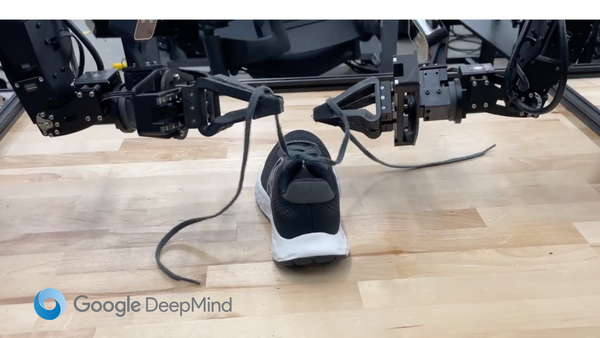Could this Lead to the End of Hydraulic-Powered Robots?
Will all-electric technology take over the market, a new gait-walking robot, and advanced bearing solutions are helping robots move like humans

Leading US Humanoid Robotics Company Shifting to All-Electric
Boston Dynamics, a leading US-based humanoid robotics company, has announced a strategic pivot from hydraulic-powered robots to all-electric technology, aligning more closely with Chinese industry standards. This shift reflects a broader trend among global robotics firms towards more efficient, cost-effective technologies. The move includes decommissioning their famous hydraulic robot, "Atlas," and introducing a new all-electric robot that promises enhanced flexibility and lower operational costs.
WHAT YOU NEED TO KNOW
- Strategic Pivot to Electric: Boston Dynamics is transitioning to electric motor-driven robots, citing advantages such as increased efficiency, speed, and lower costs. This move was prompted by the dominance of Chinese companies in electric robotics.
- Performance and Capabilities: The new electric humanoid features advanced mobility with individual electric motors at each joint, allowing for a wider range of motion and the ability to perform tasks previously challenging for hydraulic models.
- Global Competition and Innovation: Chinese companies like Unitree Robotics are pushing the boundaries in the electric humanoid robot market. Their robot H1 showcases remarkable speed and agility, winning top honors at international competitions.
WHY YOU SHOULD CARE
Understanding Boston Dynamics’ shift to electric-powered humanoid robots is essential for several reasons:
- Technological Evolution: The transition highlights a significant shift in the robotics industry towards more sustainable and cost-effective solutions, reflecting broader technological trends that could redefine performance standards across multiple sectors.
- Competitive Landscape: This move underscores the increasing influence of Chinese technological advancements on global markets, particularly in robotics, where China is setting a fast pace in innovation and commercialization.
- Industry Implications: For stakeholders in the robotics and related technology sectors, this development signals a shift in strategic priorities and potential new opportunities in robotics applications, from industrial automation to consumer products. This could influence investment decisions, partnership opportunities, and market dynamics.
A New Humanoid Gait-Walking Robot Named Mornine
Omoda and Jaecoo, in collaboration with AiMOGA and Chery Automobile, have launched a new humanoid robot named Mornine. It made its debut at a recent ecological press conference. Mornine is notable for its highly bionic gait-walking mechanism, a first globally. It enhances human-robot interaction in various customer-facing environments, such as automotive showrooms and shopping malls.
WHAT YOU NEED TO KNOW
- Innovative Design and Capabilities: Mornine features a highly bionic gait-walking system and uses cutting-edge materials like silicone and lightweight alloys for a more lifelike appearance and functionality. It has a high-dynamic response control algorithm that enables sophisticated movements and interactions.
- Integration of Advanced AI: The robot is supported by a general AI large model and automotive-specific knowledge, which enhances its ability to provide professional consultations and product promotions and adapt to a wide range of personalities and scenarios.
- Expansion into Real-World Applications: Mornine's introduction is part of Omoda’s broader strategy to merge real and virtual worlds through its O-Universe ecology. This strategy aims to transform everyday experiences and expand the role of automated technologies in personal and commercial settings.
WHY YOU SHOULD CARE
Understanding the launch of Morning by Omoda and Jaecoo is critical for several reasons:
- Technological Advancements: Mornine represents a significant leap in humanoid robot technology, especially with its unique gait-walking feature mimicking human movement more closely than previous robots. This advancement is crucial as it pushes the boundaries of what humanoid robots are capable of, setting new standards for realism and functionality in robotics.
- Market Dynamics: The introduction of Mornine illustrates the increasing convergence of automotive and robotics technologies, showcasing how companies leverage their expertise in one area to innovate in another. This trend reshapes competitive dynamics and opens new markets for companies like Omoda and Jaecoo.
- Future Implications: The development and deployment of humanoid robots like Mornine indicate a shift towards more immersive and interactive technologies in everyday environments. This shift will likely influence consumer expectations and experiences, heralding a future where humanoid robots become commonplace in providing services and enhancing user experiences in various industries.
Advanced Bearing Solutions Help Humanoid Robots Move Gracefully
CCTY, a leading global motion control supplier based in Lake Zurich, Illinois, is showcasing its advanced bearing solutions at The Robotics Summit in Boston. These innovations are specifically designed to enhance the mobility and flexibility of humanoid robots, enabling them to move with a lifelike grace. CCTY's bespoke bearings are crucial for replicating human joints' natural range of motion while maintaining durability and low weight.
WHAT YOU NEED TO KNOW
- Innovative Bearing Solutions: CCTY has introduced cutting-edge articulating joint bearing technologies for achieving human-like motion in humanoid robots. These include a range of bearings, such as cross-roller, ball, and angular contact ball bearings.
- Customized Engineering Approach: Unlike conventional suppliers, CCTY works closely with clients to design and develop customized bearing solutions tailored to the specific needs of each humanoid robot application, enhancing performance and efficiency.
- Industry Impact and Collaboration: At The Robotics Summit, CCTY will highlight its technological advancements and role as a collaborative partner in the robotics industry, offering insights into key trends and potential enhancements in robotics engineering.
WHY YOU SHOULD CARE
The advancements made by CCTY in the field of humanoid robotics bearings are significant for several reasons:
- Enhanced Robot Performance: CCTY’s bearings' ability to accurately mimic human joint movements is a critical factor in improving the realism and efficiency of humanoid robots. This can lead to broader applications and increased adoption in various sectors, including healthcare, entertainment, and personal assistance.
- Push for Customization in Robotics: CCTY's approach of providing customized solutions rather than off-the-shelf components represents a shift towards more specialized manufacturing in robotics. This trend is essential for meeting the unique demands of advanced robotics applications and can lead to innovations in other areas of robot design.
- Strategic Partnerships and Industry Growth: CCTY’s commitment to working alongside their clients to refine and enhance their robotic applications exemplifies the importance of collaboration in the fast-evolving field of robotics. Their focus on partnership and problem-solving is crucial for driving the capabilities and adoption of next-generation humanoid robots.



